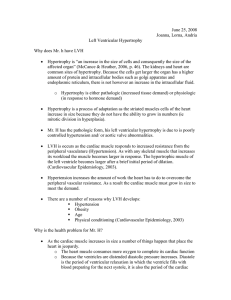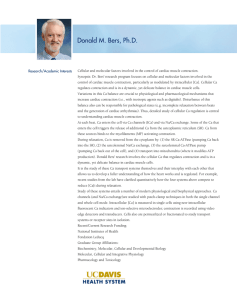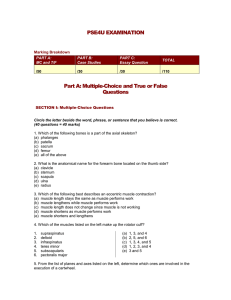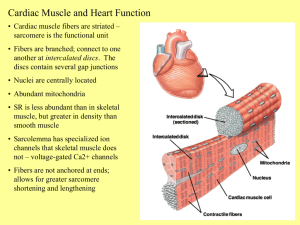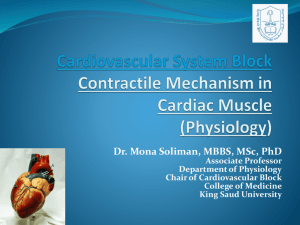Your heart is worth learning about!
advertisement
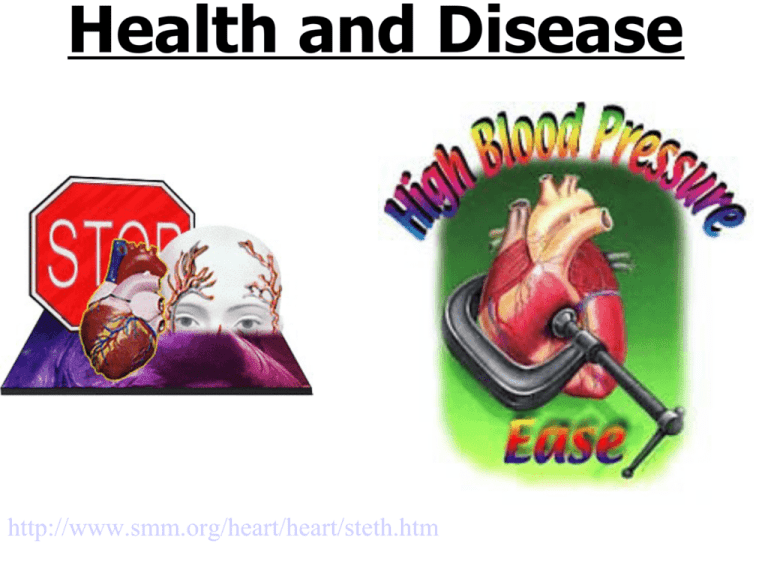
Health and Disease http://www.smm.org/heart/heart/steth.htm Misconceptions • Heart disease is associated with being over the age of 50. Misconceptions • A “sign” is something that is visible, while a “symptom” is something that must be described by the person who is ill. Is this a sign or a symptom? Misconceptions • The heart muscle is irreplaceable once it is diseased and damaged? Misconceptions • Smoking is one of the leading causes of heart disease? What factors contribute to heart disease? “controllable *” vs “non controllable”. • • • • • lack of exercise*, smoking*, high blood pressure*, diabetes*, high cholesterol*, • Age, • genetics, • family history of heart disease. Ways to lower blood pressure when treating hypertension “high blood pressure” • Medications - reduce cardiac output • Vasodilators -reduce blood pressure • Diuretics - reduces the volume of liquid in the body Nitroglycerine • a vasodilator: increase the diameter of blood vessels (especially coronary arteries) • mimics the natural “fight and flight” mechanism bypass surgery The effect of nicotine • can cause “atherosclerosis”. What is the range of “normal” blood pressure? 140 over 90 What happens if your numbers are higher than this range? you have high blood pressure, or hypertension. Why is hypertension dangerous? • it causes the heart to work extra hard (ENLARGED HEART). • contributes to heart attacks and stroke. How can hypertension be treated? • diet and exercise • Diuretics • Beta blockers reduce the heart rate and the heart's output of blood. How can you monitor the heart? • arrhythmia -irregular pattern of the heart's beat. • murmur - blood is seeping through the closed valve separating the atrium and ventricle. X-ray • shows size and position • It can also show any obvious deformities. Angioplasty • common methods for exploring the heart. • The last resort is open heart surgery. Angina: When the heart is deprived of oxygen, chest pain or chest tightness occurs Your heart is worth learning about! What is the normal resting pulse rate for someone in your age range? Answer: •Approximately 60-90 bpm •Athlete ~40- 60 bpm •Lance Armstrong 32 bpm Your heart is worth learning about! What is Canada’s recommendation for the amounts of exercise teenagers should get? Answer: •60 min moderate to vigorous daily •Vigorous at least 3 days/week •Activities that strengthen bone and muscle 3 days/week Your heart is worth learning about! What is your target heart rate during exercise – Age 16? Answer: •Novice: 82-102 •Beginner 102-122 •Average 122-163 Your heart is worth learning about! What is your maximum heart rate (MHR) you should reach before encountering risks to your health? Answer: •MHR = 220 - age Which organs have increased blood flow during strenuous exercise? Answer: Heart, muscle, skin Explain, in terms of cellular respiration, why each of the changes shown is advantageous. 1. Increased skeletal muscle blood flow… 2. Increased systolic arterial pressure… 3. Decreased resistance in blood vessels… 4. Increased cardiac output… All of these changes serve to meet the needs of the muscle cells during increased cellular respiration! What is the relationship between cardiac output and cellular respiration? The increased cardiac output delivers more blood per minute to muscle, delivering the needed oxygen…







